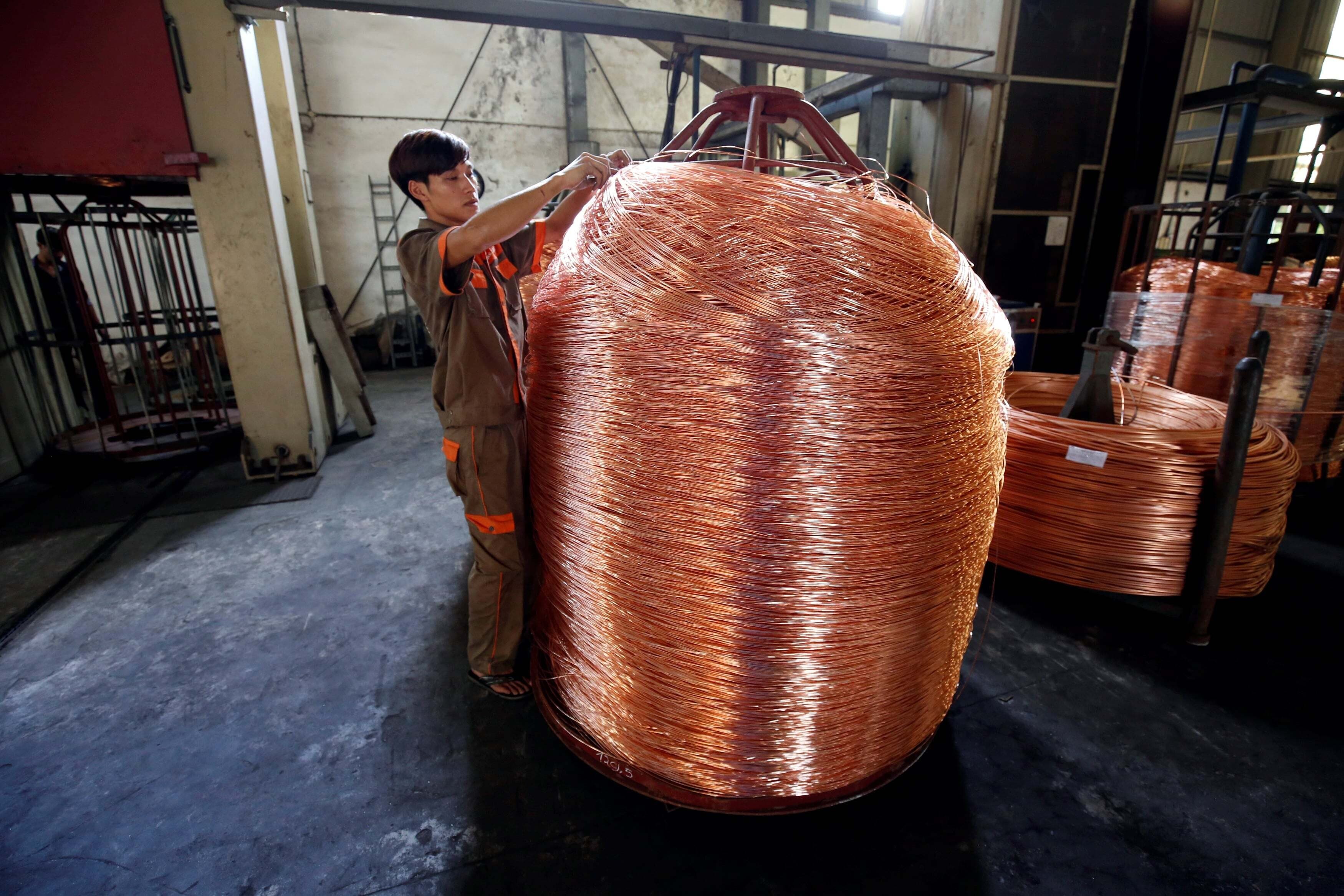What’s the ‘bullwhip effect’ and how can we avoid crises like the global chip shortage?

Image: REUTERS/Jonathan Ernst TPX IMAGES OF THE DAY - RC2AZL99S734
Stay up to date:
Trade and Investment
- An ongoing shortage of semiconductors has had profound impacts.
- The current scarcity has been described as a result of the ‘bullwhip effect.’
- Experts say there are ways to mitigate the phenomenon, which can snarl global trade.
It started with diapers.
Babies were doing their part by steadily blazing through pairs of Pampers. But the maker of the disposable products realized in the 1990s it was enduring fluctuations in demand that hit harder the further one moved up the supply chain, from tiny consumer to manufacturer. The problem was dubbed the “bullwhip effect.”
We're currently receiving a crash course in the bullwhip effect, trade dynamics and supply-chain risk thanks to a global semiconductor shortage.
In this case it’s not Pampers that are potentially in short supply, but the stunningly wide array of things we now rely on that require chips.
The global auto industry is expected to make as many as five million fewer cars this year than anticipated due to the scarcity, and buying a big SUV could cost at least 20% more than it would have last year. The shortage is expected to take as much as a $4 billion bite out of Apple’s quarterly sales due to supply constraints on iPads and Macs, and Samsung cited a “serious imbalance” in global supply and demand for chips while warning it might delay the launch of a new phone.
There are a number of causes of the bullwhip effect, like poor demand forecasting, price fluctuations, and a lack of clear communication. The semiconductor market’s issues began with an abrupt surge in demand last year for devices to keep us entertained and working remotely during the pandemic, which is still unfurling through supply chains. That was followed by a rebound in demand for cars that use an increasing number of chips, adding a second crack of the whip.
Aggravating factors have included a drought in Taiwan, China – home to nearly a quarter of the global capacity for making semiconductors, which is a water-intensive process – and abnormally cold temperatures in Texas that shut down manufacturing plants.
The shortage has raised concerns about the concentration of so much chip manufacturing in relatively few countries. According to a recent estimate nearly three-quarters of global semiconductor manufacturing capacity is located in four countries in Asia. And when it comes to the most cutting-edge chips, capacity is limited to just two.

The semiconductor shortage is a striking example of the pandemic’s potential to expose the vulnerabilities of global supply chains and trade patterns.
But experts say there are ways to mitigate similar calamities in the future.
For example, by curbing the sort of panic buying and hoarding that have contributed to the shortage of chips. And, suppliers can make efforts to more accurately calculate their buyers’ actual needs – and limit shipments beyond that point.
In the US, the White House issued an executive order in February intended in part to bolster domestic manufacturing of semiconductors. “We need to prevent the supply chain crisis from hitting in the first place,” President Joe Biden said.
In Europe, EU member states have signed a joint declaration pledging to increase the bloc’s self-sufficiency when it comes to chips. “We need to strengthen Europe’s capacity to develop the next generation of processors and semiconductors,” it reads.
However, focusing solely on domestic manufacturing may underestimate the complex and inevitably global nature of chip production, and building a new chip foundry can be dauntingly expensive and time consuming.
Ultimately, some argue the best way to foster a semiconductor industry that serves everyone's interests is through greater international cooperation.

For more context, here are links to further reading from the World Economic Forum's Strategic Intelligence platform:
- US-based Intel says it plans to invest billions of dollars in new factories to counter the concentration of chip production in Asia. According to this piece, the move highlights just how far the company, and the US, have fallen behind. (Wired)
- Taiwan, China, has not only been suffering from a drought – it’s also now faced with a potential brain drain of semiconductor engineering talent, according to this report. (The Diplomat)
- No company is safe from the great semiconductor famine of 2021, according to the analysis. Part of the problem: setting up a semiconductor foundry requires an upfront investment of as much as $12 billion, and three years to become production ready. (The Conversation)
- Several years ago, a business professor asked rhetorically whether the bullwhip effect was still a potential threat – and laid out this nice explainer of the phenomenon. (IMD Business School)
- The European Commission aims to establish cutting-edge semiconductor manufacturing in the EU by the end of this decade, but according to this analysis it would be better off addressing its “Achilles’ heel”: a lack of chip design prowess. (Stiftung Neue Verantwortung)
- Does the chip shortage mark the end of an era of globalization? According to this piece, the huge public stimulus spending needed to combat the crisis means the demise of “small government” and unlimited globalization. (JSTOR Daily)
- The oversized role of the semiconductor industry in the economy of Taiwan, China, brings serious risks, according to this analysis – which suggests that making products highly attractive to the world’s two biggest economies may not be as enviable as it appears. (Brookings)
On the Strategic Intelligence platform, you can find feeds of expert analysis related to International Trade, the Future of Computing and hundreds of additional topics. You’ll need to register to view.
Don't miss any update on this topic
Create a free account and access your personalized content collection with our latest publications and analyses.
License and Republishing
World Economic Forum articles may be republished in accordance with the Creative Commons Attribution-NonCommercial-NoDerivatives 4.0 International Public License, and in accordance with our Terms of Use.
The views expressed in this article are those of the author alone and not the World Economic Forum.
Forum Stories newsletter
Bringing you weekly curated insights and analysis on the global issues that matter.
More on Trade and InvestmentSee all
John Letzing
July 24, 2025
Anthony Cano Moncada
July 23, 2025
Lisa Satolli
July 17, 2025
Yusuf Maitama Tuggar
July 10, 2025
Bright Simons
July 7, 2025






